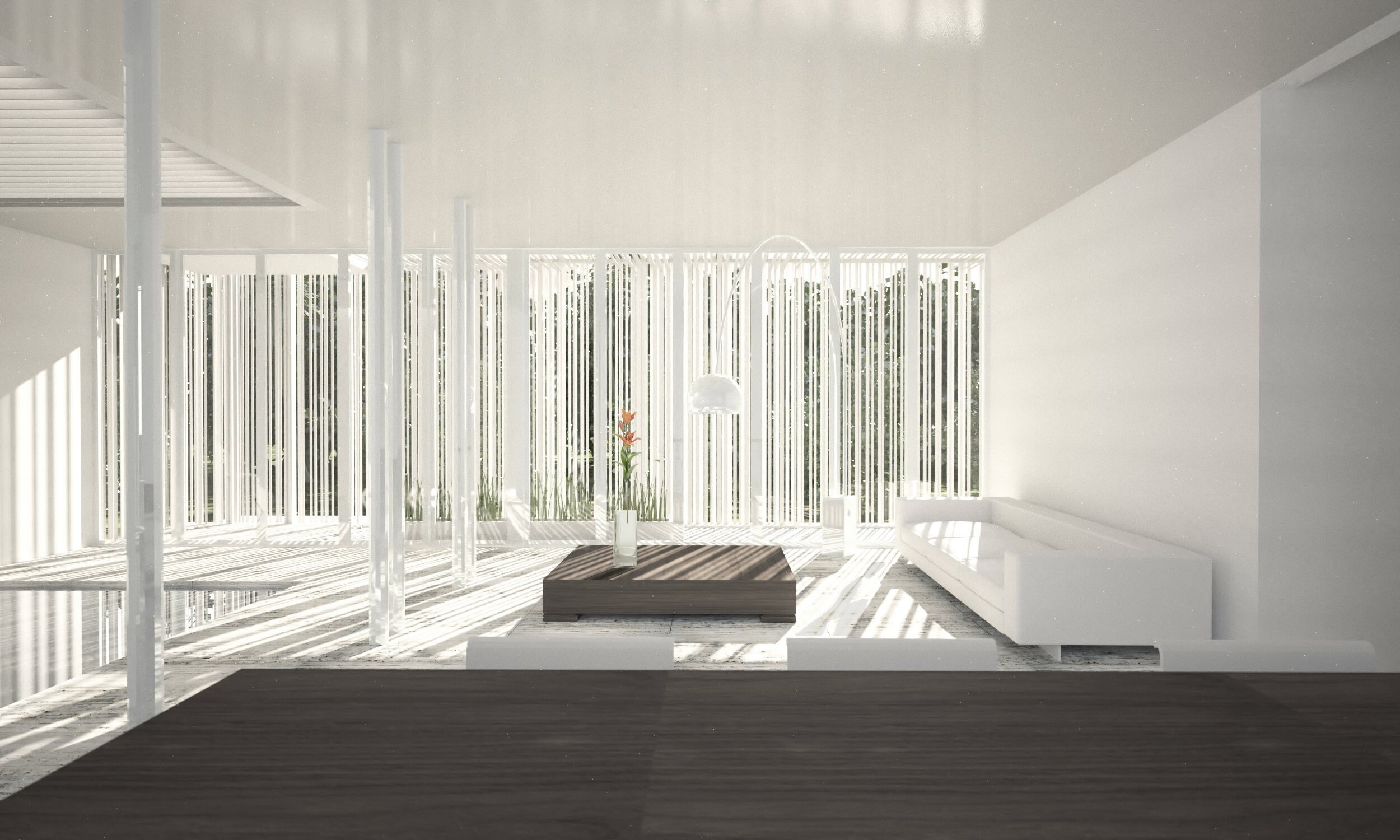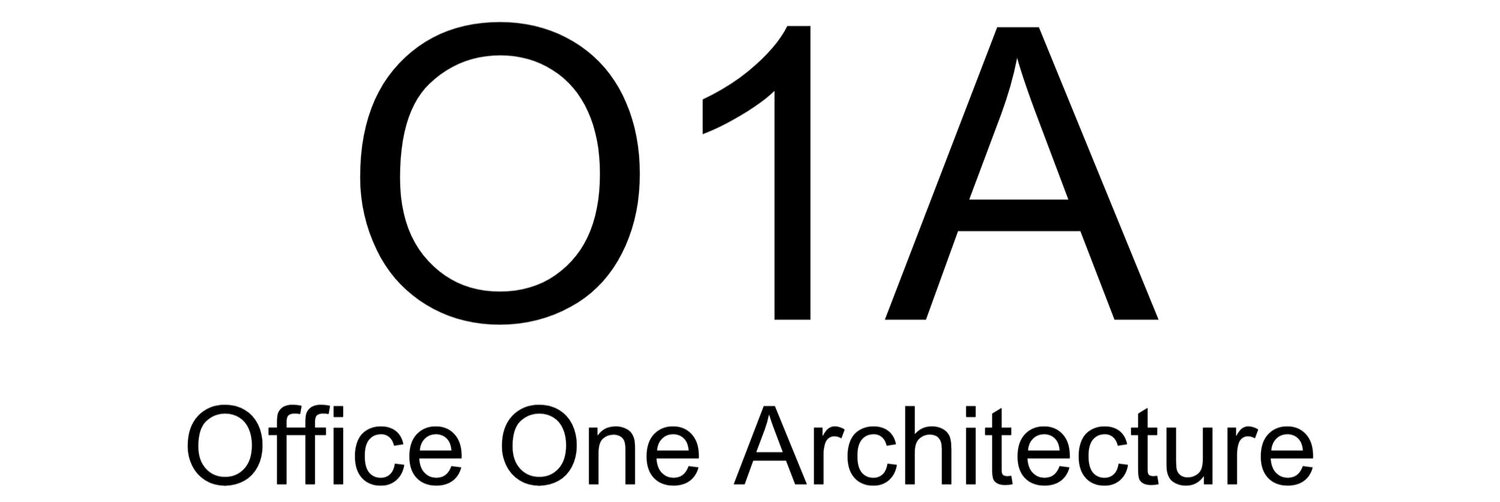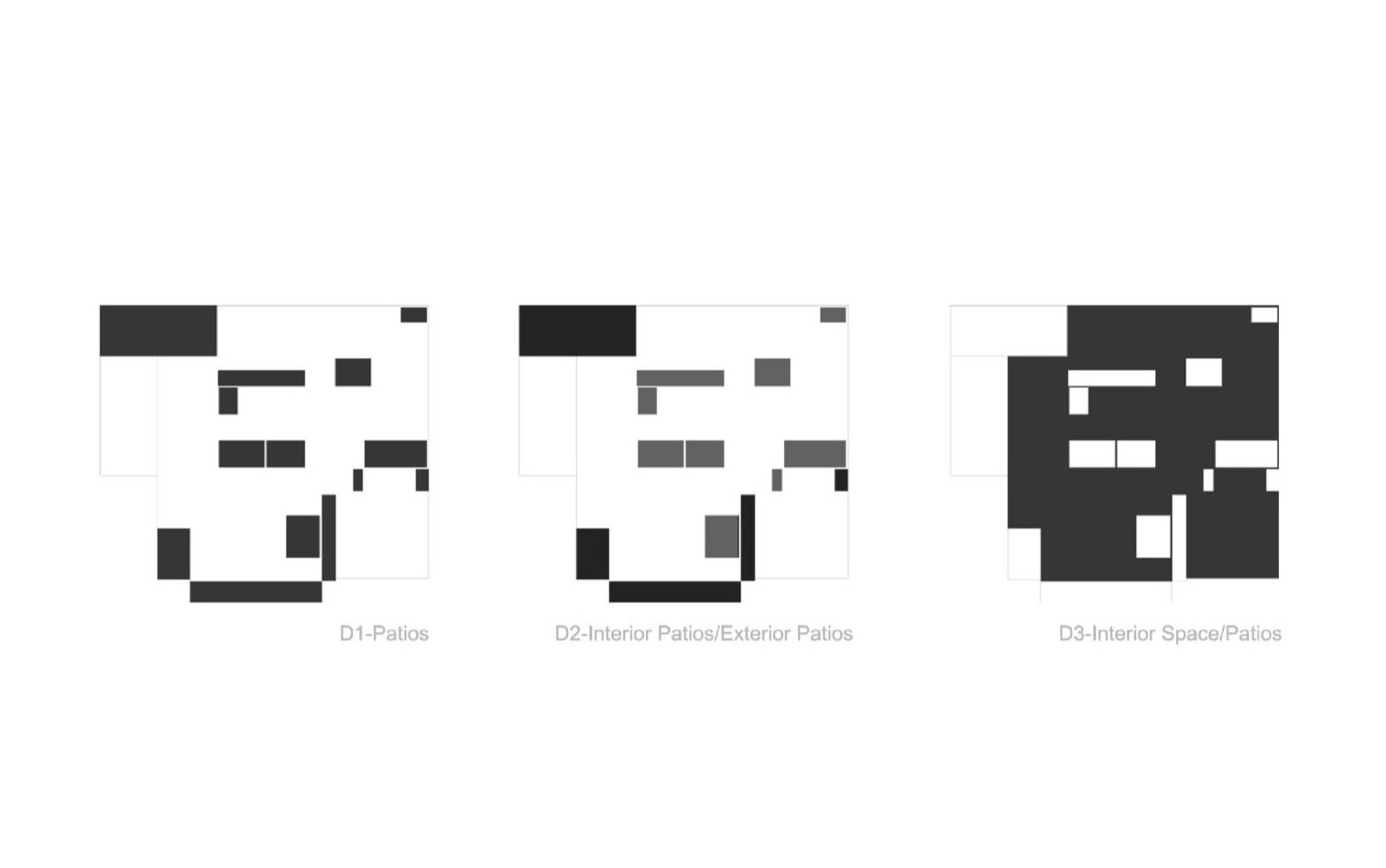Casa Patio 1
AIA Honor Award- Florida, 2013
AIA Honor Award- Puerto Rico, 2013
PR Bienal Honor Mention, 2009
Casa Patio is the proposal for a single family residence to be located in suburban development. The Typology of the patio house if re-conceptualized by organizing and distributing patios in an aleatory, non hierarchical fashion so as to resolve site, programmatic, economic and sustainable design issues. The patio becomes the single most important variable in defining the fundamental aspects of the habitable structure. First and foremost, the patio allows for the establishment of a direct relationship between architecture and nature otherwise not realized in the dense and cluttered environment created once the immediate context is fully developed. Understood as an expansion device it resolves closed and dark spaces created by the dense single plan project. Program and Nature are fused in an independent manner to define a continuous spatial sequence, yet resolving conflict through the subtle transformation of space in dimension, proportion and use. The spatial sequence is characterized by the discovery and encounter of the patios. On the other hand, the proposal explores passive energy strategies by incorporating natural light, natural ventilation, and economy of means. The patio functions as a mechanism which introduces zenithal light and ventilates interior spaces. Economy of means is achieved by using the local methods of construction provided by the construction industry, Reinforced Concrete Structure, and by controlling span dimensions of slabs and window openings.

The main architectural element of the house is composed of a steel plate skin that wraps around the front patio. Perceived as an orthogonal steel screen, it is composed of thin vertical plates varying only subtly in width and arrangement. The outermost layer spans the entire width of the skin while the interior layer is fragmented and spans only in segmental fashion in order to densify the skin and allow for different levels of transparency. These subtle moves are synchronized with the interior space so as to reveal or hide information, increasing or decreasing visibility to the exterior according to the program and spatial sequence. Conceived as a shading device, the skin not only filters tropical light but generates an in between and habitable space. This three dimensional quality of space creates various scenarios. On the one hand, the frontal patio allows for an extension of the living room and, on the other, it serves as a buffer zone between the interior and exterior spaces. The skin also functions as a protection device from local climate and foreign intrusions. The steel screen protects the glass surfaces from flying projectiles during a hurricane. This new added skin allows for a major integration between inside and outside in a Caribbean climate.







